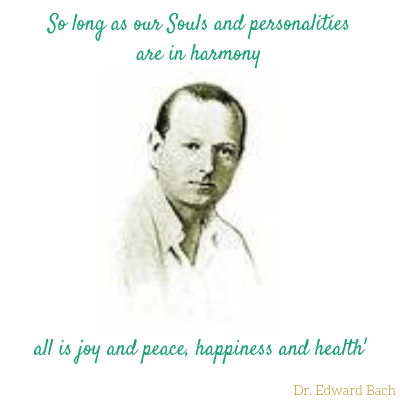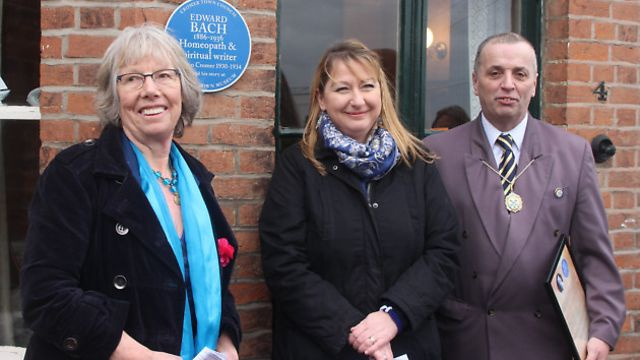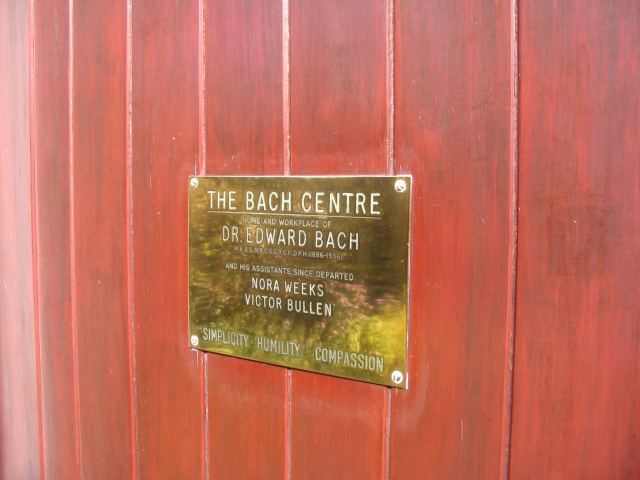What are the Bach Flower Remedies?
A safe and natural system of stress relief discovered by a doctor in England almost 100 years ago.
Flowers have been used throughout time to express loving emotions—to bring joy, comfort, and support to others. Over 90 years ago, a British physician, surgeon, and homeopath found that flowers could do much more. Dr. Edward Bach discovered that emotional disharmony such as anger, fear, worry, and more were the initial triggers for imbalances, discomfort, and unhappiness, and that these could ultimately lead to physical illness.[1] It would take the scientific community another 60+ years to begin to validate this relationship between stress and illness.
But many decades before, in the 1930s, Dr. Bach discovered that the energy of specific flowers could gently move the emotions back to a state of harmony, thereby restoring well-being. He found 38 different flowers containing specific balancing energies, and made a diluted “sun tea” of each one to create energetic essences.[2] The 38 Bach Flower Remedies each address a different emotion and may be taken internally or applied topically to restore balance to our emotional energies. Dr. Bach wanted his safe, gentle system to be accessible to all and would be pleased to know that today Bach Flower Remedies are used around the world.

Who was Dr. Edward Bach?
Dr. Edward Bach was a physician, surgeon, homeopath, bacteriologist, and immunologist.
Edward Bach studied medicine at Birmingham University and University College Hospital, London. He qualified in 1912 and worked as house surgeon, pathologist, and bacteriologist. He also carried out original research into immunology and vaccine therapy.
In 1919 Bach took up a post at the Royal London Homeopathic Hospital. Inspired by his experiences there, he began research into the use of healing plants. In working with his patients, he found that their physical illnesses were exacerbated by their mental and emotional states and so set out to discover a system of healing with non-toxic plants that would be safe and simple, with no side effects.
Using his vast knowledge of herbs and intuition, he sought plants which balanced specific negative emotions and formulated them into dilute homeopathic mixtures. The first remedy created in this way was Impatiens, in 1928. Mimulus and Clematis followed in 1930. Ultimately, he located 38 flowers from plants and trees with healing properties to comprise his complete system; these preparations became known as the “Bach Flower Remedies.”
He eventually left London for the English countryside. From 1930–1934, he lived by the sea in Cromer, wandering the countryside in search of remedy plants.

Cromer historical plaque image: Dr. Edward Bach, Homeopath and Spiritual Writer. Eastern Daily Press, Feb 26, 2017.
The last two years of his work were completed at his final home, Mount Vernon, in Brightwell-cum-Sotwell, Wallingford—a small country village about 50 miles outside London.

Dr. Bach wanted his system to be safe and simple, so that anyone could use it in their home. These 38 drops can be used in combination to address over 200 million states of mind. Best of all, they are gentle, non-toxic, and do not interact with other treatments. The remedies are manufactured under strict guidelines for safety and purity (GMP standards established by the World Health Organization) and are now available in over 60 countries worldwide.[3]
Frequently Asked Questions
What are Bach Flower Remedies used for?
The 38 remedies help balance specific emotional states—such as fear, worry, overwhelm, self-doubt, or discouragement—so you feel more centered and resilient.
Are Bach Flower Remedies safe to take with other treatments?
Yes. They are gentle, non-habit-forming, and can be used alongside other wellness approaches.
How many remedies should I mix at one time?
Best practice is up to seven remedies at once; many people use fewer based on their current state. Don’t add in extra flowers just in case—only take the ones that apply.
How often should I take my blend?
Four drops (or two sprays) at least four times daily. Consistency helps shift patterns.
Who created the system?
Dr. Edward Bach (1886–1936), a British physician and researcher, developed the complete 38-remedy system in the 1930s.
Next step: Learn the basics in our Tier 1 (Foundations) course or review how to take Bach Flower Remedies.
References
- The Bach Centre: Biography of Dr. Edward Bach
- Healing Herbs: Julian Barnard on Making the Remedies
- World Health Organization: Traditional Medicine Guidelines
 To enhance your user experience on our website, this site uses cookies.
If you continue to browse, you accept the use of cookies on our site.
See our Privacy Policy
for more information.
To enhance your user experience on our website, this site uses cookies.
If you continue to browse, you accept the use of cookies on our site.
See our Privacy Policy
for more information.